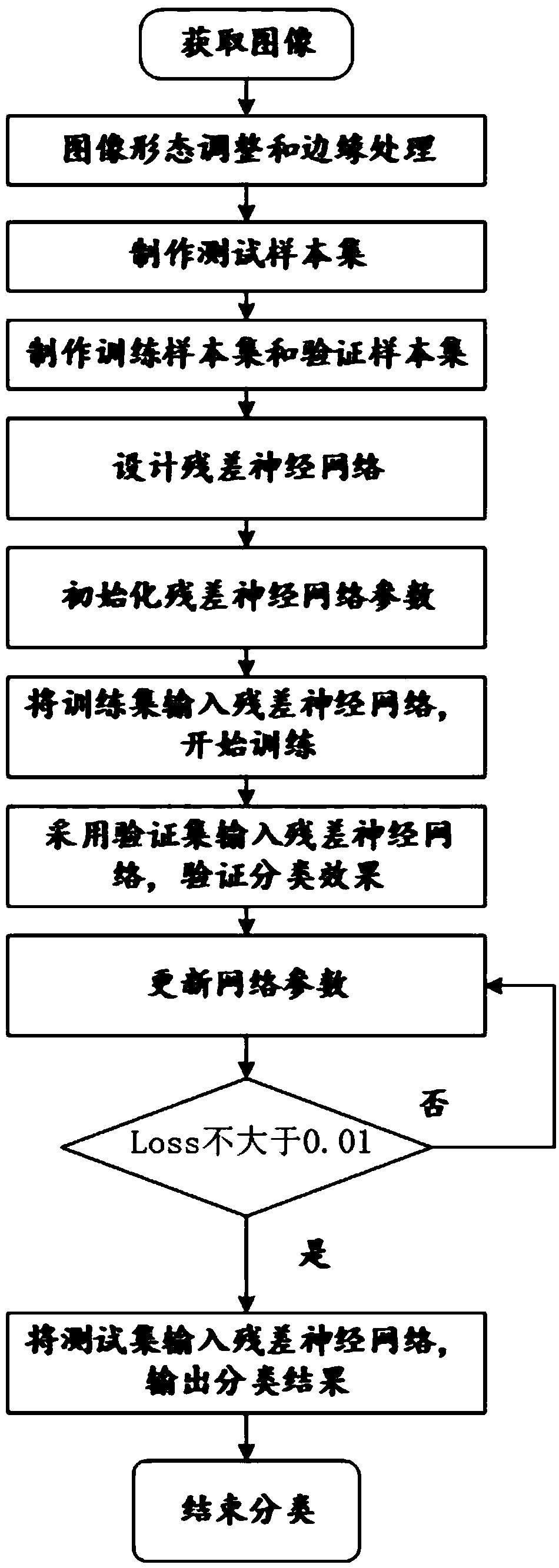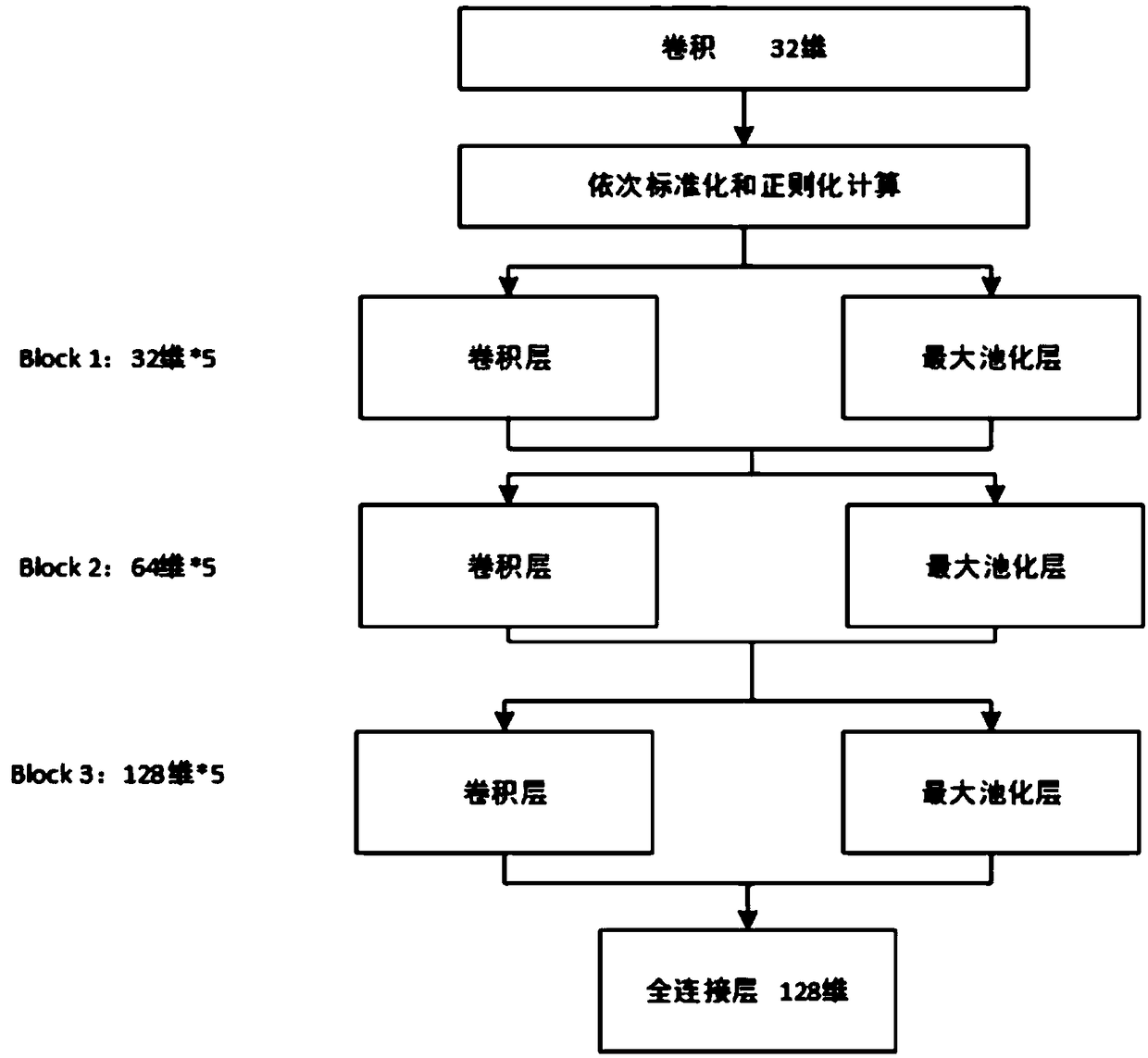Photovoltaic cell appearance defect classification method based on multi-channel residual neural network
A neural network and photovoltaic cell technology, applied in instruments, character and pattern recognition, computer components, etc., can solve the problems of unsuitable polysilicon cells, unaffordable hardware equipment, expensive software authorization, etc., to speed up training and control The number of parameters, the effect of reducing training time
- Summary
- Abstract
- Description
- Claims
- Application Information
AI Technical Summary
Problems solved by technology
Method used
Image
Examples
Embodiment 1
[0060] The method for classifying photovoltaic cell appearance defects based on a multi-channel residual neural network in this embodiment includes the following steps:
[0061] The first step: image preprocessing
[0062] 1-1 Image acquisition: Obtain photovoltaic cell images through the high-dynamic color industrial camera UI-3280CP-C-HQ (dynamic range refers to the ability of the camera to correctly record the brightness range of the scene, which is between the brightest part and the darkest part of the scene Difference);
[0063] 1-2 Image morphology adjustment and edge processing: Use regional morphology processing to remove the pulley part in the image, perform least square edge extraction and fitting on the edge of the silicon chip in the image, and fit the curve boundary in the original image to a straight line. So as to obtain a target image with effective edges;
[0064] 1-3 Preparation of test sample set: Manually sort the target images in steps 1-2, and add defect type la...
PUM
 Login to View More
Login to View More Abstract
Description
Claims
Application Information
 Login to View More
Login to View More - R&D
- Intellectual Property
- Life Sciences
- Materials
- Tech Scout
- Unparalleled Data Quality
- Higher Quality Content
- 60% Fewer Hallucinations
Browse by: Latest US Patents, China's latest patents, Technical Efficacy Thesaurus, Application Domain, Technology Topic, Popular Technical Reports.
© 2025 PatSnap. All rights reserved.Legal|Privacy policy|Modern Slavery Act Transparency Statement|Sitemap|About US| Contact US: help@patsnap.com



